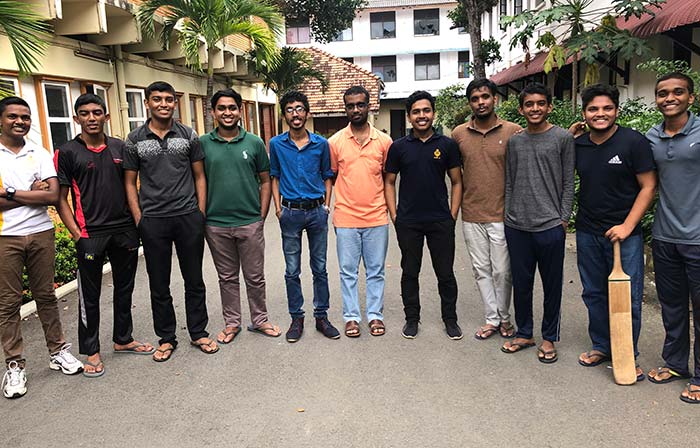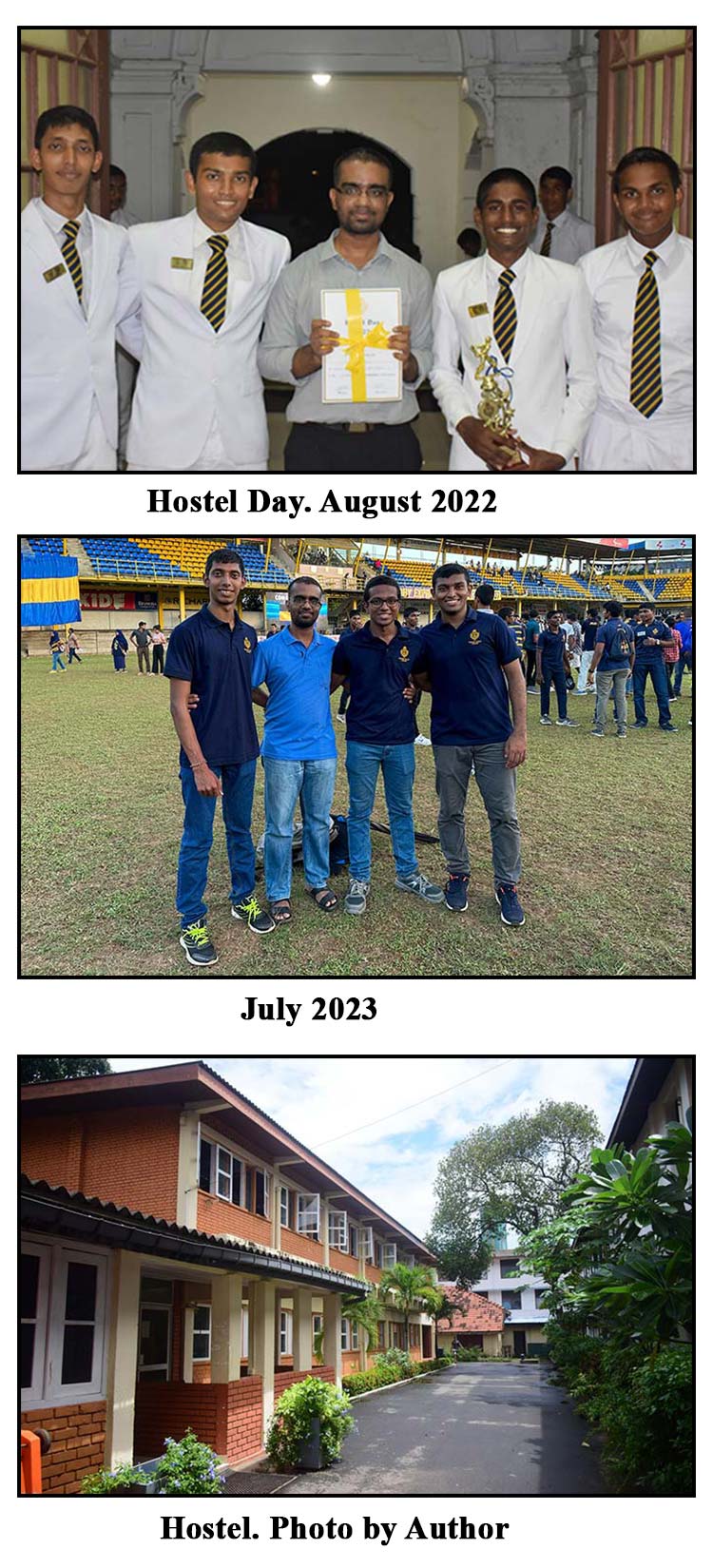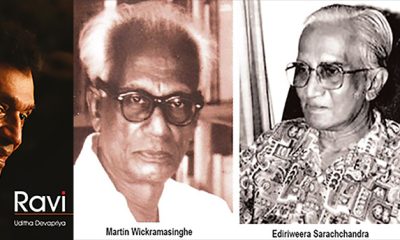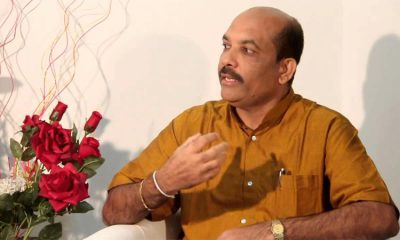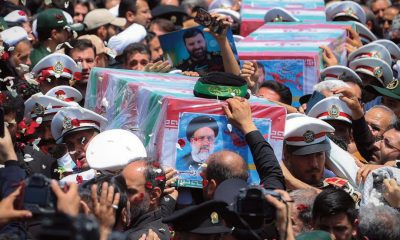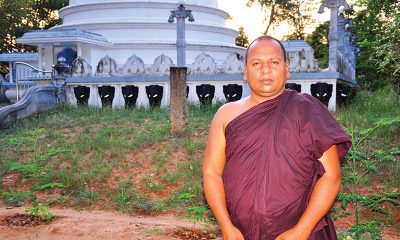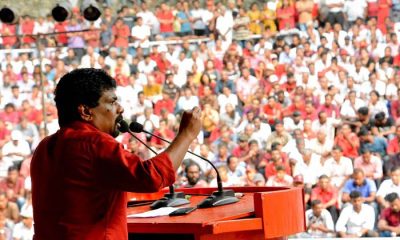Features
Among the Trobrianders: A Personal Journey
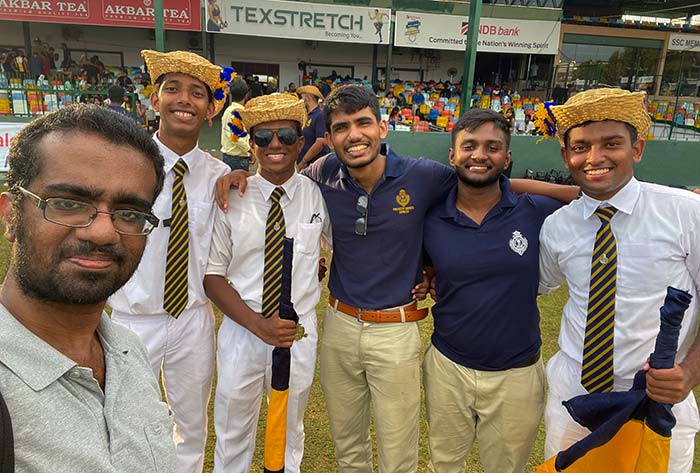
By Uditha Devapriya
You are putting me in a hole.
No, I am taking you out of it!
Somewhere in 2016, I lost my first job.I had been working at my old school for two months, and had been led to assume that I would be retained to help them draft a communications policy. I was into PR, had hopes of entering advertising, and was looking for a suitable opening.
All of a sudden, I was told they didn’t need such a person.
I was 23 at the time. I had just completed law school and was waiting for my results.
It was not the best time to be idle. I needed a job.
And now, I was out of one.
I tried contacting friends and acquaintances, clinging to any mutual contact I could find.
None of it worked.
Frantically, I fired off one email after another.
I may have sent tens if not hundreds of emails. Many replied, and some asked me to come over to be interviewed. The interviews, however, all left a bad taste in my mouth. The jobs they had either paid too low or were outside my comfort zone.
Then an ad agency, one of many agencies I had emailed, got in touch. They scheduled an interview in December. There they said they wanted someone with “zero experience in advertising.” They thought I fitted the bill. They took me in.
By now I was freelancing to several newspapers in the country. I was writing on the arts, reviewing films, plays, the occasional exhibition. The pay wasn’t good, but the exposure was: it got me in touch with artists, directors, writers, dancers.
I had always been mad about culture and the arts. At school I had inclined to subjects like history and literature. Though I did not study them for my Advanced Levels – I chose Commerce, a “safer” stream, instead – I did not abandon them. I pursued such fields as a writer and a journalist after leaving school.
There was a problem, however. For more than a decade I had studied mostly in English, and had become ignorant of my language and culture. I came from a Sinhala speaking background, but since I spent six hours at school, two getting back home, and around five or six active hours at home, this did not amount to much.
In my time, the rage everywhere in the country was for English, Western, private education. Our parents had studied in the vernacular: Sinhala or Tamil. Yet after leaving school they had felt it would be better to have their children taught in English.
Public schools used to have English medium classes, but by the time I was born these had been abandoned. As a result, a new type of school had cropped up, catering to an ever-growing demand for English education.
The problem was that while we readily immersed ourselves in English education, many of us allowed ourselves to neglect our languages. Though our parents were concerned about what was happening to us and nationalist groups bemoaned what this was doing to our country and culture, there was little anyone could do about it. It did not help that in the classroom, we were tacitly discouraged from talking in Sinhala and Tamil.
The result was that most of us came out knowing next to nothing about our language, religion, culture, society, even our people. I was no exception. Westernised, though in a half-baked way, I could not relate to the world I had been born to.
Lester James Peries recalled undergoing a similar experience at his school.
Some of us became snobs. Even today, I can’t speak Sinhala properly.
So did Osmund Jayaratne.
If, instead of Latin, we had been given a good grounding of our native tongue, Sinhala, I would have been very happy, but unfortunately this was not to be.
And so did Gamani Corea.
[F]or my generation, the lapse [in Sinhala] was a serious one and a handicap for later life.
These were sentiments I could relate to.
A few months after I began my job, I realized that things would only get worse. I may have been writing to newspapers on local art and culture, but I was writing in English, thinking in English, operating in English, living and breathing English.
My new workplace made me more conscious of these deficiencies. A good copywriter tends to be rooted in his surroundings. He or she tends to be bicultural, if not bilingual, and finds it easy to operate in both English and the vernacular.
My problem was that I was far from being bicultural, in any sense.
It was a hole I needed to get out of, and fast.
My coworkers had, in their own way, stepped in and helped me improve somewhat. Yet they were too busy. I realized I could expect only so much from them.
Someone else had to step in. Someone from outside.
———————————–
Freelancing has its advantages and privileges. You aren’t constrained by deadlines, and you are free to write what you want to write. You get to associate with people who relate to you. You get to write on them. Often you get to learn from them.
One night in 2017, the Secretary of a school society called me. The society, the Library Readers’ Association, the oldest student-led association at the school, was organizing an exhibition-cum-quiz. They wanted a judge for the quiz, and an article written on the event. Since I had been a quizzer and was a writer, I seemed to fit the bill.
I duly served as judge, and the article, which the boys fortunately liked, duly got published. In Sri Lanka, however, events never really end: they lead to other events. Soon I was getting requests from them to write on other societies and clubs, including sports events. These were not typical press release articles, but full-length human-interest essays, different from the journalistic pieces that get written about such events.
It was then that I realised that most of these boys came from a world completely different to the world I had grown up in. Though they attended what was seen as the leading public school in the island, Royal College, they had entered it through the Grade Five Scholarship, and had been boarded at the school Hostel.
Hailing from villages that lay far away from Colombo – you had to fulfil a distance threshold to be boarded at the Hostel – they represented an antithesis of my personality. They had lived their entire childhood at home. As I talked with them, they regaled me with stories of the culture shock they underwent after they moved to Colombo.
At first our parents were worried. Would we grow up away from them?
The first English song I ever heard was our school anthem.
Some classmates mocked me, they made fun of the way I talked.
Becoming the butt-end of jokes, they adapted by either suppressing their identity or, in the more likely scenario, insulting the insulters.
In our first two years, we mocked those who spoke only in English in our classrooms.
They seemed too nerdy, too polite. They were like babies.
That, however, only heightened their fear of the language.
Of course, we were afraid of English. Some of us avoided it, others tried to master it. A few pretended it wasn’t important until it was too late.
Sri Lanka may be a small island, but it is home to an incredible range of cultures and subcultures. There is nothing monolithic about any of them.
A colourful bunch, these boys came from practically every corner of the country. In the way they talked, behaved, the way they interacted with outsiders and with me, they differed from one another. They were a microcosm of their country. Talking to them, I encountered the societies they hailed from, societies I had grown away from.
Slowly, but surely, our associations developed into friendships. As time went by, we realized that we looked at the world in different ways. Yet in one sense we were kindred spirits: we were all learning and absorbing a new culture.
For them, it was a process of discovery: living in a city, English, Western culture.
For me, it was a process of rediscovery: Sinhala language and literature, Buddhism.
In the end, we ended up teaching one another.
It was almost like Malinowski among the Trobriand Islanders. The difference, of course, is that they were as much an exotic Other to me as I was to them.
And like Malinowski and the Trobrianders, there were points of disagreement, difference, and incompatibility between us, often too big to bridge.
I found their views on culture and society intriguing. Yet beyond a point, perhaps because of my cultural conditioning, I found it hard to accept them. As an agnostic, for instance, I couldn’t relate to their religious beliefs, particularly their belief in the supernatural. Still, they expressed such sentiments with a lot of conviction.
Gods do exist.
When we feel them, we believe in them, we give them power.
Come over one day, I will show them to you.
If this is one of the more insightful comments on God-worship in Sri Lanka, or anywhere, I have come across – the notion that it is our belief in them that gives them power – it’s because it was said by someone who spoke his mind, someone who responded instinctively to such matters without intellectual obfuscations.
In other words, these boys weren’t just teaching and guiding me. They were immersing me in their moral code, their cultural universe. It was not exactly an encounter between two worlds. But it was an encounter between two ways of looking at the world.
To be sure, I still have not got out of my cocoon. I am still ignorant of cultural matters. I still make gaffes. There are times when I feel like a foreigner in my country.
Yet, largely through the intervention of these boys, I have acquired a decent understanding about things I was unaware of.
———————————–
Late last December, describing my attempts at introducing him to sociologists and historians and at getting him to talk to them, one of these boys expostulated:
You are putting me in a hole.
To which I replied:
No, I am taking you out of it!
Life ultimately amounts to the people we meet and the friendships we form.
It is about what we do for one another, the lengths we go for others.
It is about teaching new things and learning new things.
Or, as my friend put it, about falling into holes and getting out of them.
Like what these boys did for me – and like what I like to think I did for them.
Uditha Devapriya is a writer, researcher, and analyst based in Sri Lanka who contributes to a number of publications on topics such as history, art and culture, politics, and foreign policy. He can be reached at .
Features
The heart-friendly health minister

by Dr Gotabhya Ranasinghe
Senior Consultant Cardiologist
National Hospital Sri Lanka
When we sought a meeting with Hon Dr. Ramesh Pathirana, Minister of Health, he graciously cleared his busy schedule to accommodate us. Renowned for his attentive listening and deep understanding, Minister Pathirana is dedicated to advancing the health sector. His openness and transparency exemplify the qualities of an exemplary politician and minister.
Dr. Palitha Mahipala, the current Health Secretary, demonstrates both commendable enthusiasm and unwavering support. This combination of attributes makes him a highly compatible colleague for the esteemed Minister of Health.
Our discussion centered on a project that has been in the works for the past 30 years, one that no other minister had managed to advance.
Minister Pathirana, however, recognized the project’s significance and its potential to revolutionize care for heart patients.
The project involves the construction of a state-of-the-art facility at the premises of the National Hospital Colombo. The project’s location within the premises of the National Hospital underscores its importance and relevance to the healthcare infrastructure of the nation.
This facility will include a cardiology building and a tertiary care center, equipped with the latest technology to handle and treat all types of heart-related conditions and surgeries.
Securing funding was a major milestone for this initiative. Minister Pathirana successfully obtained approval for a $40 billion loan from the Asian Development Bank. With the funding in place, the foundation stone is scheduled to be laid in September this year, and construction will begin in January 2025.
This project guarantees a consistent and uninterrupted supply of stents and related medications for heart patients. As a result, patients will have timely access to essential medical supplies during their treatment and recovery. By securing these critical resources, the project aims to enhance patient outcomes, minimize treatment delays, and maintain the highest standards of cardiac care.
Upon its fruition, this monumental building will serve as a beacon of hope and healing, symbolizing the unwavering dedication to improving patient outcomes and fostering a healthier society.We anticipate a future marked by significant progress and positive outcomes in Sri Lanka’s cardiovascular treatment landscape within the foreseeable timeframe.
Features
A LOVING TRIBUTE TO JESUIT FR. ALOYSIUS PIERIS ON HIS 90th BIRTHDAY

by Fr. Emmanuel Fernando, OMI
Jesuit Fr. Aloysius Pieris (affectionately called Fr. Aloy) celebrated his 90th birthday on April 9, 2024 and I, as the editor of our Oblate Journal, THE MISSIONARY OBLATE had gone to press by that time. Immediately I decided to publish an article, appreciating the untiring selfless services he continues to offer for inter-Faith dialogue, the renewal of the Catholic Church, his concern for the poor and the suffering Sri Lankan masses and to me, the present writer.
It was in 1988, when I was appointed Director of the Oblate Scholastics at Ampitiya by the then Oblate Provincial Fr. Anselm Silva, that I came to know Fr. Aloy more closely. Knowing well his expertise in matters spiritual, theological, Indological and pastoral, and with the collaborative spirit of my companion-formators, our Oblate Scholastics were sent to Tulana, the Research and Encounter Centre, Kelaniya, of which he is the Founder-Director, for ‘exposure-programmes’ on matters spiritual, biblical, theological and pastoral. Some of these dimensions according to my view and that of my companion-formators, were not available at the National Seminary, Ampitiya.
Ever since that time, our Oblate formators/ accompaniers at the Oblate Scholasticate, Ampitiya , have continued to send our Oblate Scholastics to Tulana Centre for deepening their insights and convictions regarding matters needed to serve the people in today’s context. Fr. Aloy also had tried very enthusiastically with the Oblate team headed by Frs. Oswald Firth and Clement Waidyasekara to begin a Theologate, directed by the Religious Congregations in Sri Lanka, for the contextual formation/ accompaniment of their members. It should very well be a desired goal of the Leaders / Provincials of the Religious Congregations.
Besides being a formator/accompanier at the Oblate Scholasticate, I was entrusted also with the task of editing and publishing our Oblate journal, ‘The Missionary Oblate’. To maintain the quality of the journal I continue to depend on Fr. Aloy for his thought-provoking and stimulating articles on Biblical Spirituality, Biblical Theology and Ecclesiology. I am very grateful to him for his generous assistance. Of late, his writings on renewal of the Church, initiated by Pope St. John XX111 and continued by Pope Francis through the Synodal path, published in our Oblate journal, enable our readers to focus their attention also on the needed renewal in the Catholic Church in Sri Lanka. Fr. Aloy appreciated very much the Synodal path adopted by the Jesuit Pope Francis for the renewal of the Church, rooted very much on prayerful discernment. In my Religious and presbyteral life, Fr.Aloy continues to be my spiritual animator / guide and ongoing formator / acccompanier.
Fr. Aloysius Pieris, BA Hons (Lond), LPh (SHC, India), STL (PFT, Naples), PhD (SLU/VC), ThD (Tilburg), D.Ltt (KU), has been one of the eminent Asian theologians well recognized internationally and one who has lectured and held visiting chairs in many universities both in the West and in the East. Many members of Religious Congregations from Asian countries have benefited from his lectures and guidance in the East Asian Pastoral Institute (EAPI) in Manila, Philippines. He had been a Theologian consulted by the Federation of Asian Bishops’ Conferences for many years. During his professorship at the Gregorian University in Rome, he was called to be a member of a special group of advisers on other religions consulted by Pope Paul VI.
Fr. Aloy is the author of more than 30 books and well over 500 Research Papers. Some of his books and articles have been translated and published in several countries. Among those books, one can find the following: 1) The Genesis of an Asian Theology of Liberation (An Autobiographical Excursus on the Art of Theologising in Asia, 2) An Asian Theology of Liberation, 3) Providential Timeliness of Vatican 11 (a long-overdue halt to a scandalous millennium, 4) Give Vatican 11 a chance, 5) Leadership in the Church, 6) Relishing our faith in working for justice (Themes for study and discussion), 7) A Message meant mainly, not exclusively for Jesuits (Background information necessary for helping Francis renew the Church), 8) Lent in Lanka (Reflections and Resolutions, 9) Love meets wisdom (A Christian Experience of Buddhism, 10) Fire and Water 11) God’s Reign for God’s poor, 12) Our Unhiddden Agenda (How we Jesuits work, pray and form our men). He is also the Editor of two journals, Vagdevi, Journal of Religious Reflection and Dialogue, New Series.
Fr. Aloy has a BA in Pali and Sanskrit from the University of London and a Ph.D in Buddhist Philosophy from the University of Sri Lankan, Vidyodaya Campus. On Nov. 23, 2019, he was awarded the prestigious honorary Doctorate of Literature (D.Litt) by the Chancellor of the University of Kelaniya, the Most Venerable Welamitiyawe Dharmakirthi Sri Kusala Dhamma Thera.
Fr. Aloy continues to be a promoter of Gospel values and virtues. Justice as a constitutive dimension of love and social concern for the downtrodden masses are very much noted in his life and work. He had very much appreciated the commitment of the late Fr. Joseph (Joe) Fernando, the National Director of the Social and Economic Centre (SEDEC) for the poor.
In Sri Lanka, a few religious Congregations – the Good Shepherd Sisters, the Christian Brothers, the Marist Brothers and the Oblates – have invited him to animate their members especially during their Provincial Congresses, Chapters and International Conferences. The mainline Christian Churches also have sought his advice and followed his seminars. I, for one, regret very much, that the Sri Lankan authorities of the Catholic Church –today’s Hierarchy—- have not sought Fr.
Aloy’s expertise for the renewal of the Catholic Church in Sri Lanka and thus have not benefited from the immense store of wisdom and insight that he can offer to our local Church while the Sri Lankan bishops who governed the Catholic church in the immediate aftermath of the Second Vatican Council (Edmund Fernando OMI, Anthony de Saram, Leo Nanayakkara OSB, Frank Marcus Fernando, Paul Perera,) visited him and consulted him on many matters. Among the Tamil Bishops, Bishop Rayappu Joseph was keeping close contact with him and Bishop J. Deogupillai hosted him and his team visiting him after the horrible Black July massacre of Tamils.
Features
A fairy tale, success or debacle

Sri Lanka-Singapore Free Trade Agreement
By Gomi Senadhira
senadhiragomi@gmail.com
“You might tell fairy tales, but the progress of a country cannot be achieved through such narratives. A country cannot be developed by making false promises. The country moved backward because of the electoral promises made by political parties throughout time. We have witnessed that the ultimate result of this is the country becoming bankrupt. Unfortunately, many segments of the population have not come to realize this yet.” – President Ranil Wickremesinghe, 2024 Budget speech
Any Sri Lankan would agree with the above words of President Wickremesinghe on the false promises our politicians and officials make and the fairy tales they narrate which bankrupted this country. So, to understand this, let’s look at one such fairy tale with lots of false promises; Ranil Wickremesinghe’s greatest achievement in the area of international trade and investment promotion during the Yahapalana period, Sri Lanka-Singapore Free Trade Agreement (SLSFTA).
It is appropriate and timely to do it now as Finance Minister Wickremesinghe has just presented to parliament a bill on the National Policy on Economic Transformation which includes the establishment of an Office for International Trade and the Sri Lanka Institute of Economics and International Trade.
Was SLSFTA a “Cleverly negotiated Free Trade Agreement” as stated by the (former) Minister of Development Strategies and International Trade Malik Samarawickrama during the Parliamentary Debate on the SLSFTA in July 2018, or a colossal blunder covered up with lies, false promises, and fairy tales? After SLSFTA was signed there were a number of fairy tales published on this agreement by the Ministry of Development Strategies and International, Institute of Policy Studies, and others.
However, for this article, I would like to limit my comments to the speech by Minister Samarawickrama during the Parliamentary Debate, and the two most important areas in the agreement which were covered up with lies, fairy tales, and false promises, namely: revenue loss for Sri Lanka and Investment from Singapore. On the other important area, “Waste products dumping” I do not want to comment here as I have written extensively on the issue.
1. The revenue loss
During the Parliamentary Debate in July 2018, Minister Samarawickrama stated “…. let me reiterate that this FTA with Singapore has been very cleverly negotiated by us…. The liberalisation programme under this FTA has been carefully designed to have the least impact on domestic industry and revenue collection. We have included all revenue sensitive items in the negative list of items which will not be subject to removal of tariff. Therefore, 97.8% revenue from Customs duty is protected. Our tariff liberalisation will take place over a period of 12-15 years! In fact, the revenue earned through tariffs on goods imported from Singapore last year was Rs. 35 billion.
The revenue loss for over the next 15 years due to the FTA is only Rs. 733 million– which when annualised, on average, is just Rs. 51 million. That is just 0.14% per year! So anyone who claims the Singapore FTA causes revenue loss to the Government cannot do basic arithmetic! Mr. Speaker, in conclusion, I call on my fellow members of this House – don’t mislead the public with baseless criticism that is not grounded in facts. Don’t look at petty politics and use these issues for your own political survival.”
I was surprised to read the minister’s speech because an article published in January 2018 in “The Straits Times“, based on information released by the Singaporean Negotiators stated, “…. With the FTA, tariff savings for Singapore exports are estimated to hit $10 million annually“.
As the annual tariff savings (that is the revenue loss for Sri Lanka) calculated by the Singaporean Negotiators, Singaporean $ 10 million (Sri Lankan rupees 1,200 million in 2018) was way above the rupees’ 733 million revenue loss for 15 years estimated by the Sri Lankan negotiators, it was clear to any observer that one of the parties to the agreement had not done the basic arithmetic!
Six years later, according to a report published by “The Morning” newspaper, speaking at the Committee on Public Finance (COPF) on 7th May 2024, Mr Samarawickrama’s chief trade negotiator K.J. Weerasinghehad had admitted “…. that forecasted revenue loss for the Government of Sri Lanka through the Singapore FTA is Rs. 450 million in 2023 and Rs. 1.3 billion in 2024.”
If these numbers are correct, as tariff liberalisation under the SLSFTA has just started, we will pass Rs 2 billion very soon. Then, the question is how Sri Lanka’s trade negotiators made such a colossal blunder. Didn’t they do their basic arithmetic? If they didn’t know how to do basic arithmetic they should have at least done their basic readings. For example, the headline of the article published in The Straits Times in January 2018 was “Singapore, Sri Lanka sign FTA, annual savings of $10m expected”.
Anyway, as Sri Lanka’s chief negotiator reiterated at the COPF meeting that “…. since 99% of the tariffs in Singapore have zero rates of duty, Sri Lanka has agreed on 80% tariff liberalisation over a period of 15 years while expecting Singapore investments to address the imbalance in trade,” let’s turn towards investment.
Investment from Singapore
In July 2018, speaking during the Parliamentary Debate on the FTA this is what Minister Malik Samarawickrama stated on investment from Singapore, “Already, thanks to this FTA, in just the past two-and-a-half months since the agreement came into effect we have received a proposal from Singapore for investment amounting to $ 14.8 billion in an oil refinery for export of petroleum products. In addition, we have proposals for a steel manufacturing plant for exports ($ 1 billion investment), flour milling plant ($ 50 million), sugar refinery ($ 200 million). This adds up to more than $ 16.05 billion in the pipeline on these projects alone.
And all of these projects will create thousands of more jobs for our people. In principle approval has already been granted by the BOI and the investors are awaiting the release of land the environmental approvals to commence the project.
I request the Opposition and those with vested interests to change their narrow-minded thinking and join us to develop our country. We must always look at what is best for the whole community, not just the few who may oppose. We owe it to our people to courageously take decisions that will change their lives for the better.”
According to the media report I quoted earlier, speaking at the Committee on Public Finance (COPF) Chief Negotiator Weerasinghe has admitted that Sri Lanka was not happy with overall Singapore investments that have come in the past few years in return for the trade liberalisation under the Singapore-Sri Lanka Free Trade Agreement. He has added that between 2021 and 2023 the total investment from Singapore had been around $162 million!
What happened to those projects worth $16 billion negotiated, thanks to the SLSFTA, in just the two-and-a-half months after the agreement came into effect and approved by the BOI? I do not know about the steel manufacturing plant for exports ($ 1 billion investment), flour milling plant ($ 50 million) and sugar refinery ($ 200 million).
However, story of the multibillion-dollar investment in the Petroleum Refinery unfolded in a manner that would qualify it as the best fairy tale with false promises presented by our politicians and the officials, prior to 2019 elections.
Though many Sri Lankans got to know, through the media which repeatedly highlighted a plethora of issues surrounding the project and the questionable credentials of the Singaporean investor, the construction work on the Mirrijiwela Oil Refinery along with the cement factory began on the24th of March 2019 with a bang and Minister Ranil Wickremesinghe and his ministers along with the foreign and local dignitaries laid the foundation stones.
That was few months before the 2019 Presidential elections. Inaugurating the construction work Prime Minister Ranil Wickremesinghe said the projects will create thousands of job opportunities in the area and surrounding districts.
The oil refinery, which was to be built over 200 acres of land, with the capacity to refine 200,000 barrels of crude oil per day, was to generate US$7 billion of exports and create 1,500 direct and 3,000 indirect jobs. The construction of the refinery was to be completed in 44 months. Four years later, in August 2023 the Cabinet of Ministers approved the proposal presented by President Ranil Wickremesinghe to cancel the agreement with the investors of the refinery as the project has not been implemented! Can they explain to the country how much money was wasted to produce that fairy tale?
It is obvious that the President, ministers, and officials had made huge blunders and had deliberately misled the public and the parliament on the revenue loss and potential investment from SLSFTA with fairy tales and false promises.
As the president himself said, a country cannot be developed by making false promises or with fairy tales and these false promises and fairy tales had bankrupted the country. “Unfortunately, many segments of the population have not come to realize this yet”.
(The writer, a specialist and an activist on trade and development issues . )


